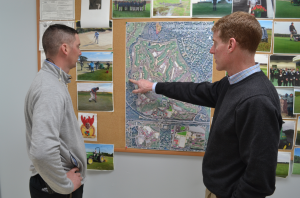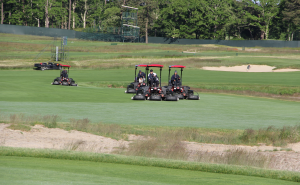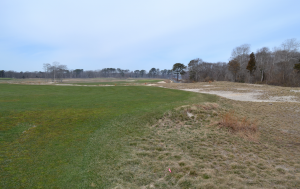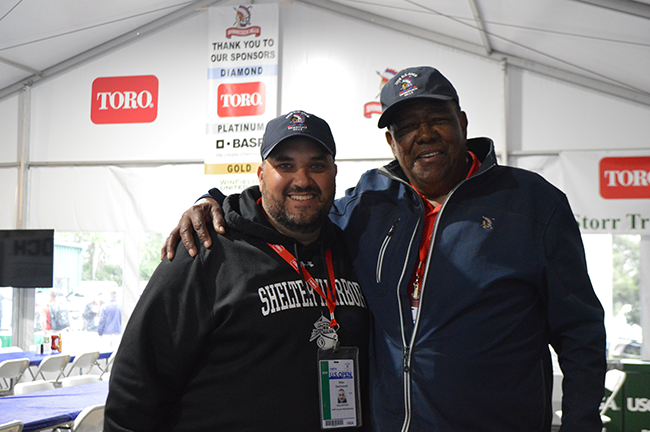Taking Shinnecock Hills back to the 1800s

Senior Assistant Superintendent Michael Ford (left) and Jon Jennings, CGCS, discuss the game plan for the day’s maintenance.
Jon Jennings, CGCS, is a student of the game of golf. He’s been fortunate to work at two of the game’s classic American golf courses, working as superintendent at Chicago Golf Club from 2000 to 2012, and now the last six years at Shinnecock Hills in Southampton, N.Y.
Shinnecock Hills underwent a restoration over the last several years, in anticipation of the 2018 U.S. Open. Jennings says it was a “surreal” experience to be involved in restoring Shinnecock to its original William Flynn look.
“If you step back from anything in golf, and you’ll hear about modern architects that are constantly going back into their courses and making little adjustments, and you scratch your head and wonder why… you go through a restoration process like this, you find out more information or you see a new picture that sparks a detail or brings forward something that maybe you missed… you can do something better,” Jennings says. “So you’re constantly making little adjustments.”
Using photos from the era, the course is now restored to what William Flynn first designed for the links course in 1931. The original shape of the greens has been reclaimed, as well as tees, along with the removal of trees that had popped up over the decades.
“This project goes back decades,” Jennings says. “(Former Shinnecock Hills Superintendent) Pete Smith started it with the Greens Committee by taking out trees and clearing out those vistas. (Former Shinnecock Hills Superintendent) Mark Michaud continued it with some green expansions and continuing the tree removal. With the Open, it really provided the catalyst for the project.”

A group of fairway mowers mowing up a fairway shows some of the long views golf fans will get to enjoy for the 2018 U.S. Open.
Jennings compares the project to constantly straightening a picture hung on the wall that shifts every time someone shuts a nearby door.
“It’s really a lot of fun to try to bring something back and try to recreate a golf course how it played a hundred years ago — but with modern features, to meet the modern game,” Jennings says. “To have that appearance is really, really neat.”
Golf fans attending the U.S. Open and watching on TV will note the vast expanses at Shinnecock.
“We wanted to expand the golf course and the grassland areas as much as possible, so we pushed the perimeter of the golf course out, the golf course encompasses in total close to 300 acres, on this side — on the south side of Sabonic Road, there’s probably about 265-270 and the remainder of the property is over on the north side and that’s not utilized as golf course,” Jennings says. “But just to recapture as much of the golfing grounds as possible, cutting and removing trees back to the property lines, instituting fescue grass that used to be there and then on the northern part of the property, fortifying that with evergreen trees, such as cedars and other native varieties, to block out the houses that are back there and provide more of a natural look…

Taken in mid-March when the course was still waking up from a cold winter and cool spring, some of the sandy native areas that were restored on the course.
“The vision of the course is to be able to look across and have vast expanses of these open vistas that you can just see from anywhere. We were looking at it the other day when you have the hospitality tents on 16, now you have something that provides scale, and these tents are huge, all the way up the side of the fairway and in between holes, and when you look at that, and just the sheer size of them, the golf course still looks big,” Jennings continues. “So it helps give you some understanding of how much you can see. At one point on the golf course, you can look across and almost see a mile in distance across it. To be able to have that length of vision is pretty neat and that’s what we wanted to recreate. It’s getting back to how the course looked if you would have come out here in the late 1800s when people first started playing golf out here.”
Photos: Seth Jones












